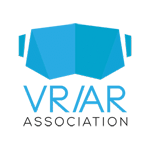
What to look for in a Virtual Reality company
You have a great Virtual Reality concept and you’ve gotten approval to move on it. Your next step: Find the Virtual Reality company that best suits the goals of your project, the timeline that you’re targeting and the needs of your company. Of course, there’s a lot to consider when seeking out a development partner for any type of project (such as scope, cost and timeline). As you set out in your search, you will also want to be aware of some unique factors that come into play when looking at Virtual Reality companies. At 3D Cloud, we’ve talked to thousands of customers and worked with dozens of clients on hundreds of Virtual Reality and Augmented Reality projects. Here’s our official checklist of what to look for in a Virtual Reality (VR) developer or Augmented Reality (AR) developer.
1. Vertical business expertise
While AR and VR tech can be nuanced and requires expertise, when it comes to building an application you need to look beyond basic expertise in Virtual Reality or Augmented Reality. Find a partner with demonstrated experience in your specific business vertical or solving for a similar challenge in a related vertical. Gaming is a big departure from retail, for instance. Logistics is a far spread from toys. While VR has specific technical challenges, the same thing is true for business verticals. If you select a company without relevant vertical experience, you are starting from scratch instead of taking advantage of existing reusable assets and expertise. This can drag out the development process and put your project at risk.
2. Proof of concept app
With AR and VR, seeing is believing. Start with a company that can build you a proof of concept (POC) app quickly and with a nominal investment. To be sure that the company that you want to hire is the real deal and doesn’t just talk a good game, insist on a proof of concept that helps you to get a glimpse of what they’ll actually deliver. The POC also provides a tangible sample of the total vision that can be circulated among stakeholders before investing in a huge project.
3. A solid product development process
Look for a partner that has a predefined a product development, release and adoption process specific to VR and AR. VR, AR and 3D content come with their own set of challenges. Additionally, there’s not enough that can be said about the importance of finding a partner that offers training, adoption and analytics support and has a standardized production process with templates, a methodology and best practices to leverage.
4. Avoid device-obsessed Virtual Reality developer partners
Each device has its own benefits and challenges and right now none of them provide a complete solution independently. If you put the device first, you can end up with a pricey custom app that isn’t portable, may be outmoded or unsupported in a few short months and can’t be repurposed down the road. Remember that devices are simply publishing platforms and delivery mechanisms for content. For many companies, the best sandbox for testing VR and AR concepts quickly and broadly may be a smartphone or tablet rather than an emerging wearable. You really don’t want to work with a company that is fixated on “which device” or even “which tech, “e,g,, AR vs. VR”. Find a company that can help you explore and develop your use case and make recommendations that make sense given the particular objectives of your project.
5. An understanding that creating and managing 3D content comes first
An experienced VR firm that will always put content first, not the device. If your company is focused on customer experience, then start with the foundation of the experience – the content. This investment is timeless and once content is created in 3D and managed, it can easily be tailored to different devices as part of a more comprehensive customer experience. Putting 3D content first and making the content flexible, relational and manageable is the best way to protect an investment in AR and VR.
6. Ongoing support
Without exception, AR and VR apps must be actively supported. Be sure to look for a company that has a program and is staffed to support installations, updates and your needs as a customer over time.
That’s a lot to think about!
It’s true that there are a lot of considerations specific to choosing a Virtual Reality company that will best help you to meet your goals. If you use the checklist above, you’re very likely to end up with a VR developer that will see your project through to completion on time and within budget while creating reusable assets for use across multiple devices. You won’t be disappointed.
Best of luck in your search!
Beck Besecker is a co-founder and the CEO of 3D Cloud.











